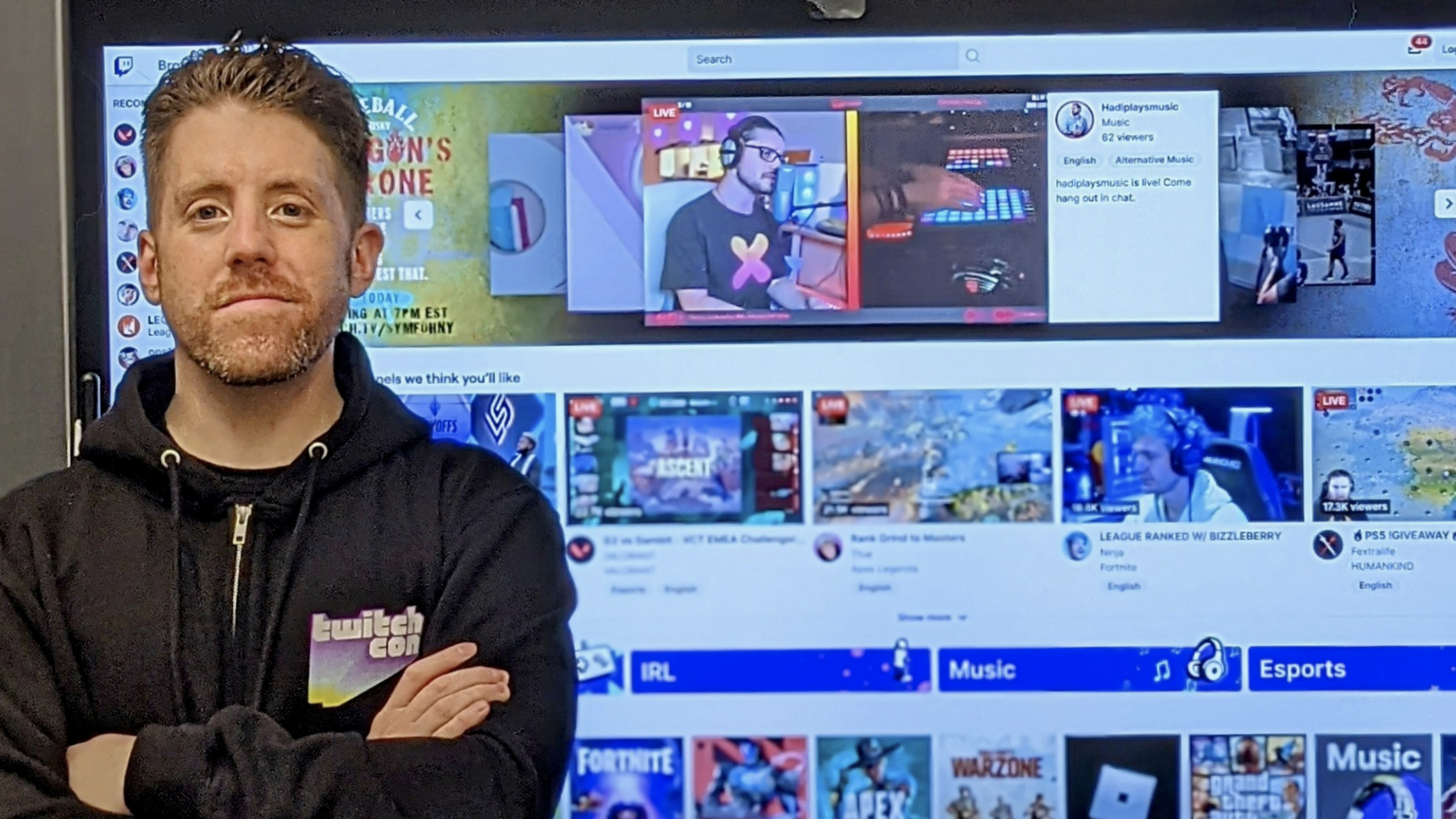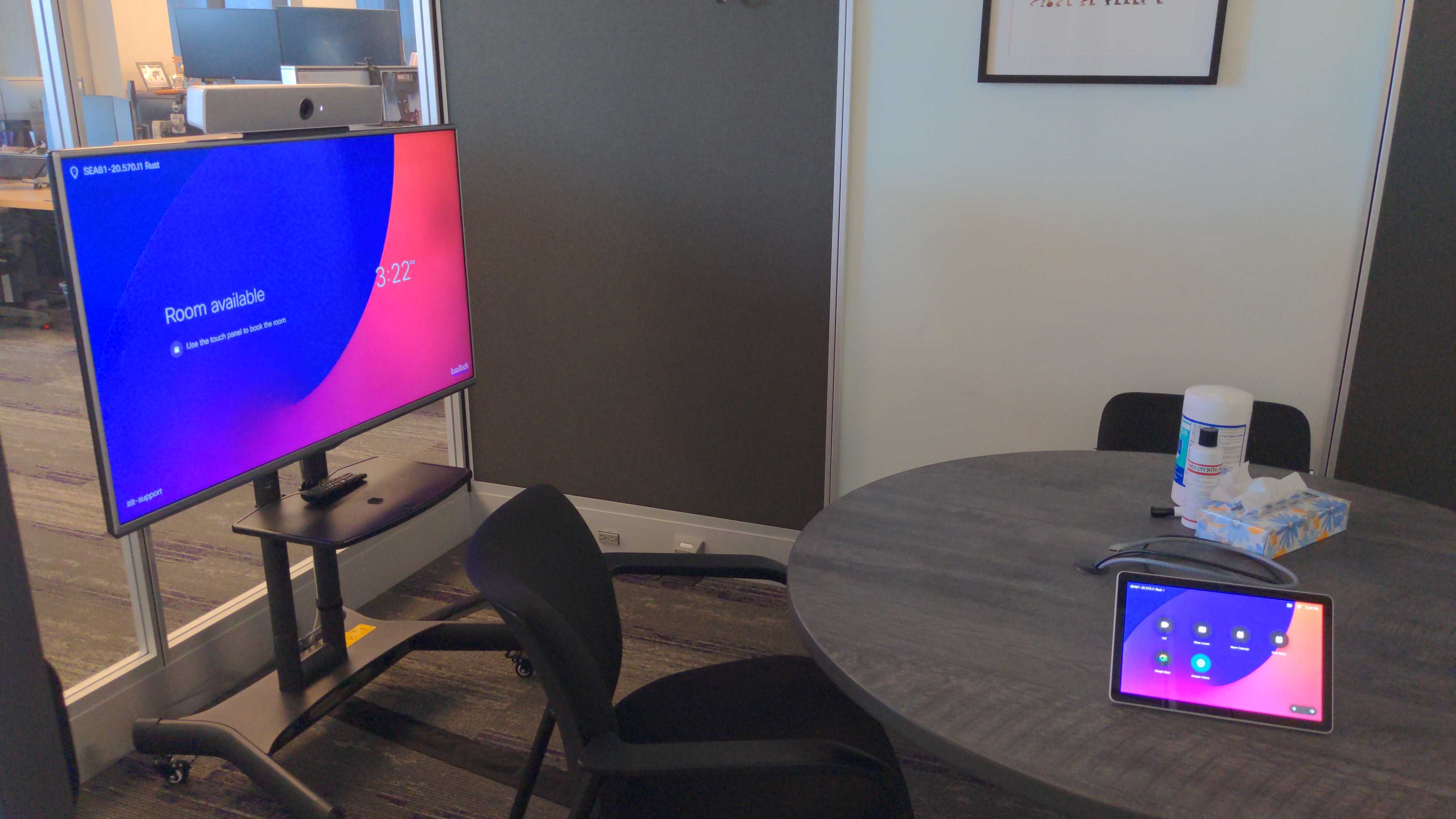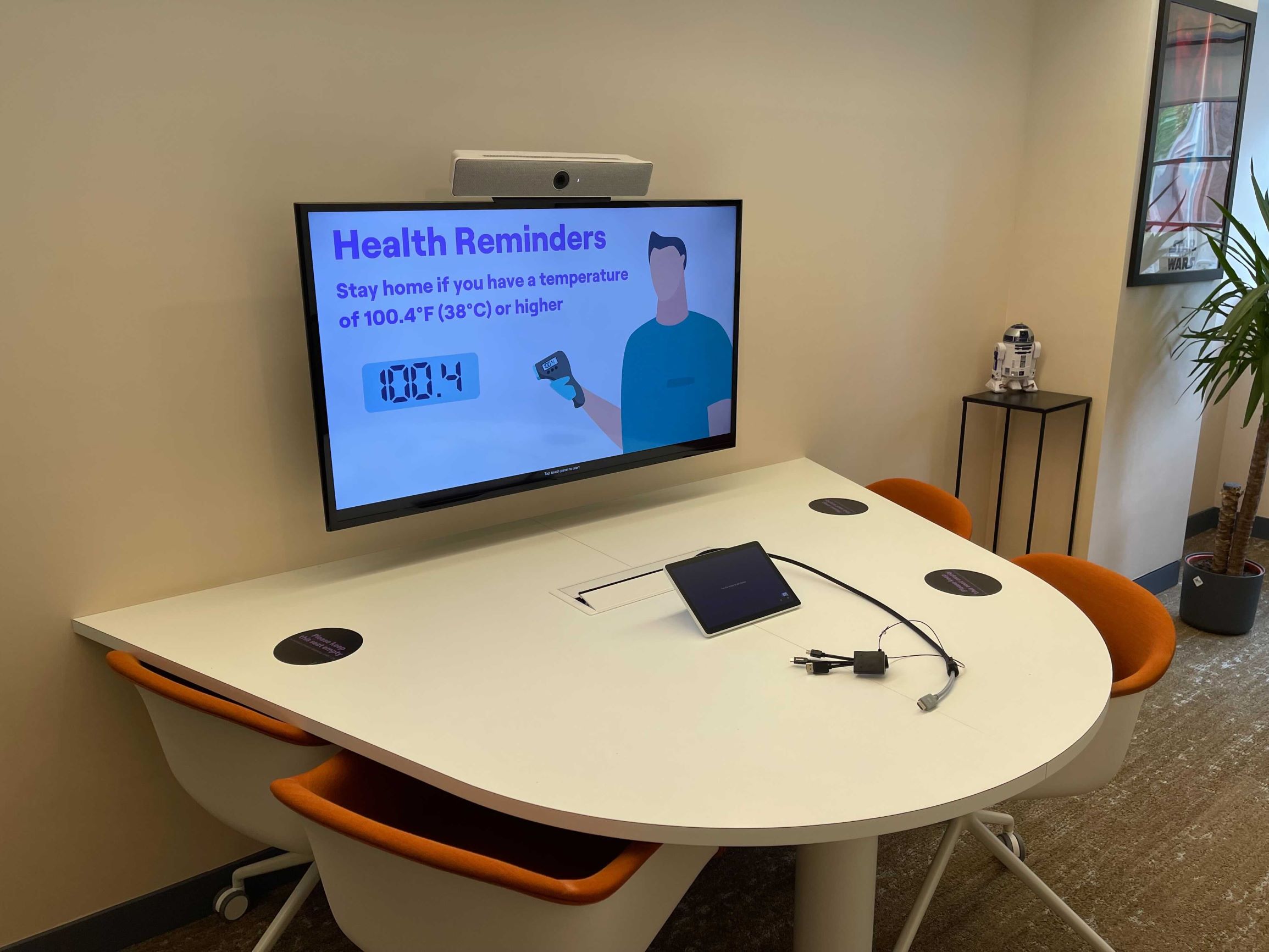AV/IT Team: Culture of Connection
Twitch is a streaming sensation. Kevin Little, Collaboration Services Manager, says inclusive meetings are crucial to the company’s success.

Twitch is more than a video game streaming service—it’s a vibrant community and global phenomenon. With more than 15 million active daily users, Twitch foregrounds a different kind of connectedness in gaming. It’s become a premier locus for video gamers, esports and music broadcasts, and “in real life” streams.
Rounding the corner of his two-year Twitch anniversary, Kevin Little, the company’s Collaboration Services manager, is ideally stationed to report on the fast-changing realities of the modern workplace. Little knows how the right technology can improve workflows, but tech is just one piece of the puzzle. For Twitch’s 1,600 employees it’s the vital culture of teamwork, equitable meetings, and frictionless collaboration that help everyone thrive.

Leveling Up
To claim COVID was an enterprise variable is a colossal understatement. For nearly two years, corporations large and small have navigated logistical changes in staffing, human resources, and supply chains. Many contend that the “office” will never look the same. Nor should it.
Accelerating an existing trend, but spurred by the pandemic, remote workers will represent “32 percent of all employees worldwide by the end of 2021,” according to Gartner.
The Twitch brain trust utilized time during the pandemic to level up its collaboration methodologies—for onsite, hybrid, and fully remote meetings. Through surveys and focus groups, Little pinpointed collaboration pain points and changing needs, and the strategies to address them.
“It was interesting to see,” Little reflected, “how quickly all the platforms tried to raise their bar—for remote workers, especially.”
Little also tracks the underlying tensions that can emerge for remote workers and ways the collaboration leaders can create bridges within existing infrastructures.
A daily selection of features, industry news, and analysis for tech managers. Sign up below.
One of the ways to make communications as seamless as possible is to create a bridge for various platforms and touch points.
Twitch has long been a “Google shop,” said Little, and, because it is an Amazon subsidiary, “we live between Amazon Chime and Google Meet.”
Technology leaders like Kevin Little focused on designing and integrating ways of communicating between the codecs. “We’ve surveyed a lot of employees, both on the Amazon side, and on the Twitch side, and we’ve worked to bridge that gap,” he said.

Planning for the Unknown
2020 saw Twitch stakeholders back at the drawing board: white boarding and workshopping “return to work” plans. But, as rapidly developing COVID-19 variant news keeps reminding the world, even surefire plans need to adjust.
Little says the key to keeping the workforce agile and connected is listening to users.
“We’ve read enough surveys about how Twitch wants to collaborate, and we plan in line with that [data],” he said. “Survey, survey, survey.”
As far as a Unified Collaboration and Communication (UCC) solution to pull disparate pieces together, Little said that Twitch chose Cisco to “bridge the gap between all the platforms—allowing internal meetings in the ways people want to meet, so Twitch can be inclusive and equitable at the same time.”
Invest in Community & Culture

With a headquarters in San Francisco, and employees around the world, Little helps “Twitch employees work the way they need to with Amazon employees.”
With its deep knowledge of Twitch’s audience, “Our team always has a very good lens on what’s coming next,” Little enthused. “They’ve done a fantastic job of weathering the [COVID-19] storm. Personally, I’ve taken the initiative to work with our Workplace Team, as well, to understand future builds, to understand how we will move forward.”
Mission matters more than ever, Little added.
Twitch has “doubled down on the community and the mission of Twitch, which is our culture,” Little said. “There will always be a balance with remote work, where and when people want to work, but at Twitch, it’s important that everybody sees each other, plus or minus three or four days a week.”
Remote Management
To build systems “with very few failure points,” Little noted, “Twitch is becoming more vendor agnostic.”
Driving that functionality-first approach is the focus on remote management, remote access, and managed services.
“All of this is done in real time now, so we can see and we can monitor, through a cloud service, or remote management,” he said.
Conferencing is Changing

Another notable trend at Twitch: Conference rooms are getting smaller and more multipurpose, trending away from the gilded, siloed executive suites of yore.
“From what I’ve seen,” Little shared, “conference rooms are becoming more multipurpose. In some cases, it means smaller, where you can have one-, two-, and three-person meetings, but also have more remote people in the meeting, in real time.”
Today’s conference spaces must also be versatile enough to support bigger events—with the flexible tech backbone to instantly shift from a huddle into a training room or an all-hands meeting space.
No matter the size or scope of the room, “It is very important to build to our standard,” Little said.
Tools Must Be Inclusive

There’s no shortage of UCC and videoconferencing platforms, soft codecs, and hardware. But there was a perennial challenge in facilitating collaborations so remote workers didn’t feel “lost,” Little said. That’s where an investment in cameras and audio—endpoints that could track people moving around the conference room—was beneficial.
There should be, ultimately, one platform. “Wherever you are, onsite or remote, you should feel included,” Little pressed. It’s critical to keeping people engaged and team morale high.
Little pointed to Twitch leadership as setting the tone for inclusion. “Lenke Taylor, our Chief People Officer at Twitch, is really dialed in and passionate about inclusivity and equitable meetings,” he said. “We want the technology to follow that vision.”
More AV/IT Team Articles
[ AV/IT Team: Building Blocks of an Immersive Experience ]
[ AV/IT Team: 5 Large-scale Displays for Immersive Visualization ]
[ AV/IT Team: Out of this World Visualization ]
[ AV/IT Team: The Digital Canvas of Fame ]
[ AV/IT Team: Purpose-built Displays ]
Don’t Chase Technology
Technology is always in flux, but one core truth remains: Don’t chase the shiny new gadget. Kevin Little confides that he has “scrapped ideas” due to changing product lines. He believes tech managers should “stop chasing technology.”
He takes a broader view: “Manufacturers and vendors will give you a roadmap as fast as they can, but adoption and systems take time.’
The media is also quick to leap on the latest product or trend. “Don’t put the cart before the horse,” he said. “Do lots of focus groups. Do a lot of use-case studies. Find out what is or isn’t important to employees. Maybe there’s one group for which a new tool could be useful. Build your decisions for the company on how they want to meet.”
The takeaway: Technology decisions should always be centered around people.
“Put people first,” is Little’s motto.
Next in Tech
Though Little envisions a time when Twitch might explore virtual reality (VR) as a “proof of concept in its lab,” he is in no rush. “I see us waiting a couple more years until adoption.”
What he’s focusing on now is video. “Because we’re such a heavy video streaming company. It is interesting to see where cameras are going—a lot of them are using AR and they’re trying to compose in different ways.”
The evolution of video transport and camera technology will come with growing pains for users, “both remote and [onsite],” Little said. What he sees in the support channels illustrates this, including the latency of the home network. “A lot of the codecs are going into NDI and IP. I’m interested to see what this will look like over one big network, as we move away from more like video cabling. It’s all over Cat-6 now.”
If Twitch’s staggering growth is any measure, the game streaming company is poised to influence the network video game profoundly.
Margot Douaihy, Ph.D., is a lecturer at Franklin Pierce University.

